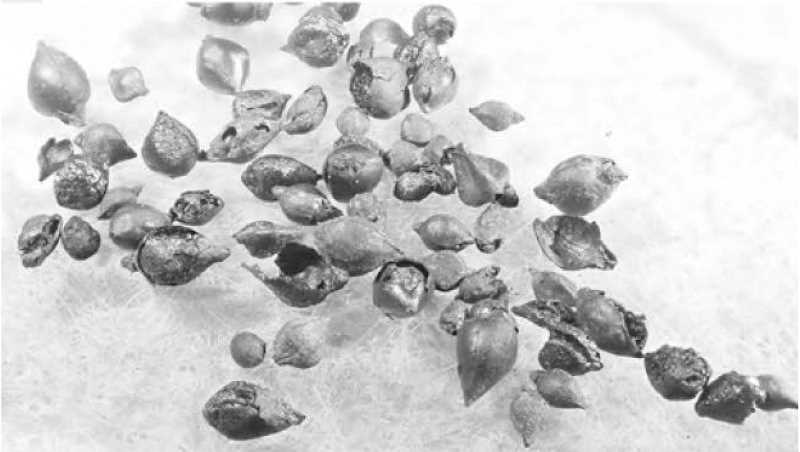Archaeology Terms
Sedge
 Sedge These charred sedge (Cyperaceae) seeds came from a feature excavated after road construction uncovered intact remnants of a late precontact Oneota site under STH 35 in Onalaska, Wisconsin, in 2012. The seeds probably came from charred thatch that lined the feature when it was used as a storage pit for plant foods such as corn, beans, and Chenopodium (goosefoot or lambsquarters). Over 143 triangular sedge seeds were identified when plant remains from the feature were analyzed under a microscope. Examples pulled for measurement were around 2.5 to 3 mm (about 1/10 inch) in length. Corn kernels had burned into the thatch in some places, suggesting burning within the pit when there were still some stored plant foods left in it.
Sedge These charred sedge (Cyperaceae) seeds came from a feature excavated after road construction uncovered intact remnants of a late precontact Oneota site under STH 35 in Onalaska, Wisconsin, in 2012. The seeds probably came from charred thatch that lined the feature when it was used as a storage pit for plant foods such as corn, beans, and Chenopodium (goosefoot or lambsquarters). Over 143 triangular sedge seeds were identified when plant remains from the feature were analyzed under a microscope. Examples pulled for measurement were around 2.5 to 3 mm (about 1/10 inch) in length. Corn kernels had burned into the thatch in some places, suggesting burning within the pit when there were still some stored plant foods left in it.

